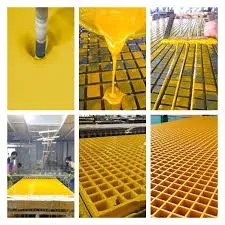
-
 Afrikaans
Afrikaans -
 Albanian
Albanian -
 Amharic
Amharic -
 Arabic
Arabic -
 Armenian
Armenian -
 Azerbaijani
Azerbaijani -
 Basque
Basque -
 Belarusian
Belarusian -
 Bengali
Bengali -
 Bosnian
Bosnian -
 Bulgarian
Bulgarian -
 Catalan
Catalan -
 Cebuano
Cebuano -
 China
China -
 China (Taiwan)
China (Taiwan) -
 Corsican
Corsican -
 Croatian
Croatian -
 Czech
Czech -
 Danish
Danish -
 Dutch
Dutch -
 English
English -
 Esperanto
Esperanto -
 Estonian
Estonian -
 Finnish
Finnish -
 French
French -
 Frisian
Frisian -
 Galician
Galician -
 Georgian
Georgian -
 German
German -
 Greek
Greek -
 Gujarati
Gujarati -
 Haitian Creole
Haitian Creole -
 hausa
hausa -
 hawaiian
hawaiian -
 Hebrew
Hebrew -
 Hindi
Hindi -
 Miao
Miao -
 Hungarian
Hungarian -
 Icelandic
Icelandic -
 igbo
igbo -
 Indonesian
Indonesian -
 irish
irish -
 Italian
Italian -
 Japanese
Japanese -
 Javanese
Javanese -
 Kannada
Kannada -
 kazakh
kazakh -
 Khmer
Khmer -
 Rwandese
Rwandese -
 Korean
Korean -
 Kurdish
Kurdish -
 Kyrgyz
Kyrgyz -
 Lao
Lao -
 Latin
Latin -
 Latvian
Latvian -
 Lithuanian
Lithuanian -
 Luxembourgish
Luxembourgish -
 Macedonian
Macedonian -
 Malgashi
Malgashi -
 Malay
Malay -
 Malayalam
Malayalam -
 Maltese
Maltese -
 Maori
Maori -
 Marathi
Marathi -
 Mongolian
Mongolian -
 Myanmar
Myanmar -
 Nepali
Nepali -
 Norwegian
Norwegian -
 Norwegian
Norwegian -
 Occitan
Occitan -
 Pashto
Pashto -
 Persian
Persian -
 Polish
Polish -
 Portuguese
Portuguese -
 Punjabi
Punjabi -
 Romanian
Romanian -
 Russian
Russian -
 Samoan
Samoan -
 Scottish Gaelic
Scottish Gaelic -
 Serbian
Serbian -
 Sesotho
Sesotho -
 Shona
Shona -
 Sindhi
Sindhi -
 Sinhala
Sinhala -
 Slovak
Slovak -
 Slovenian
Slovenian -
 Somali
Somali -
 Spanish
Spanish -
 Sundanese
Sundanese -
 Swahili
Swahili -
 Swedish
Swedish -
 Tagalog
Tagalog -
 Tajik
Tajik -
 Tamil
Tamil -
 Tatar
Tatar -
 Telugu
Telugu -
 Thai
Thai -
 Turkish
Turkish -
 Turkmen
Turkmen -
 Ukrainian
Ukrainian -
 Urdu
Urdu -
 Uighur
Uighur -
 Uzbek
Uzbek -
 Vietnamese
Vietnamese -
 Welsh
Welsh -
 Bantu
Bantu -
 Yiddish
Yiddish -
 Yoruba
Yoruba -
 Zulu
Zulu
A Complete Resource for Chemical Products in FRP Applications
Chemical Products for FRP Applications A Comprehensive Guide
Fiber Reinforced Plastics (FRP) have become integral materials in various industries due to their exceptional strength-to-weight ratio, corrosion resistance, and versatility. The effectiveness of FRP solutions often relies on the chemical products used during their manufacturing and processing. This guide aims to outline key chemical products utilized in FRP applications and their respective roles in enhancing the performance and longevity of FRP components.
1. Resins
At the core of FRP technology are resins, which function as the matrix that binds the fibers together. The two predominant types of resins used are unsaturated polyester and epoxy.
- Unsaturated Polyester Resins (UPR) These are favored for their cost-effectiveness and ease of use. UPRs are often used in applications such as automotive parts, benches, and boat hulls. Their quick curing time and moderate thermal resistance make them ideal for a variety of FRP products.
- Epoxy Resins Known for their superior adhesion, chemical resistance, and mechanical properties, epoxy resins are preferred for high-performance applications. They are widely used in aerospace, marine, and industrial sectors, where durability and longevity are paramount. Although more expensive than UPR, their enhanced features justify the investment for critical applications.
2. Hardening Agents and Accelerators
The curing process of resins often requires hardening agents, also known as curing agents. These substances facilitate the chemical reaction that transforms liquid resins into solid, durable materials.
- Polyamine Hardeners Commonly used with epoxy resins, polyamine hardeners provide excellent mechanical properties and chemical resistance, crucial for applications in harsh environments.
- Peroxide-Ester Combinations These are typically used with unsaturated polyester resins, offering a fast curing process while maintaining an adequate work time before solidifying.
Accelerators are also often incorporated to enhance the curing speed of the resin system, adapting to various manufacturing processes and conditions.
chemical products for frp applications a comprehensive guide ...

Reinforcement materials are vital in providing FRP with the necessary strength and rigidity. The most common reinforcements are glass fibers, carbon fibers, and aramid fibers.
- Glass Fibers Widely used due to their affordability, glass fibers improve the tensile strength and impact resistance of FRP components. They are often found in consumer goods, building materials, and automotive applications.
- Carbon Fibers Known for their high strength-to-weight ratio, carbon fibers are extensively used in aerospace and high-performance automotive applications. They offer superior stiffness and thermal stability, which are essential for demanding environments.
- Aramid Fibers Often used in safety equipment and military applications, aramid fibers provide excellent resistance to abrasion and impact, complementing the physical properties of conventional glass fibers.
4. Additives
To further enhance the performance characteristics of FRP materials, various additives are employed
- Fillers Fillers such as talc and calcium carbonate can be added to improve mechanical properties and reduce costs by minimizing resin content.
- Colorants and UV Stabilizers For aesthetic purposes and to protect against ultraviolet degradation, colorants and stabilizers are essential in applications exposed to sunlight.
- Anti-static and Flame-retardant Additives In industries where static build-up or fire hazards are a concern, special additives can ensure that FRP materials meet safety regulations.
Conclusion
The world of Fiber Reinforced Plastics is complex, yet the chemical products that support FRP applications are instrumental in ensuring their success across numerous industries. Understanding the roles of resins, hardening agents, reinforcements, and additives is essential for manufacturers aiming to produce high-quality FRP components that meet specific performance benchmarks. As technology advances, the development of new chemical products will continue to drive the evolution of FRP technology, paving the way for innovative applications in the future.









